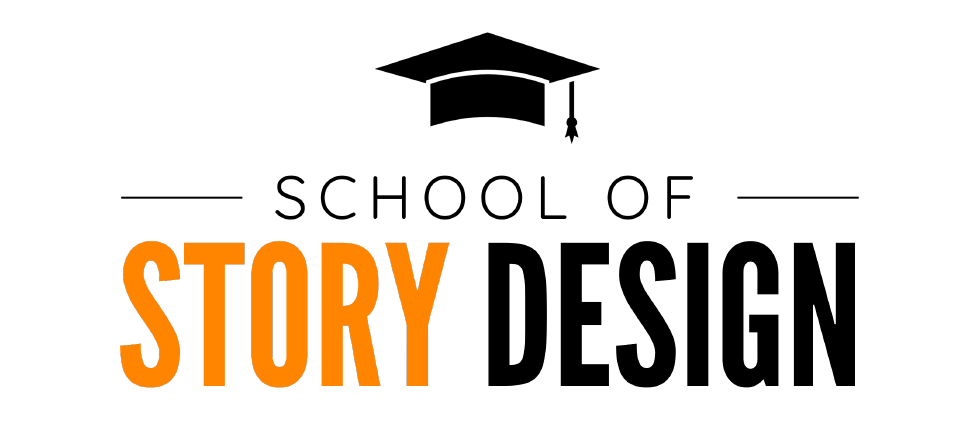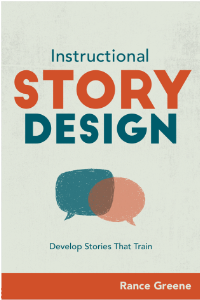How To Humanize Training
May 15
/
Rance Greene
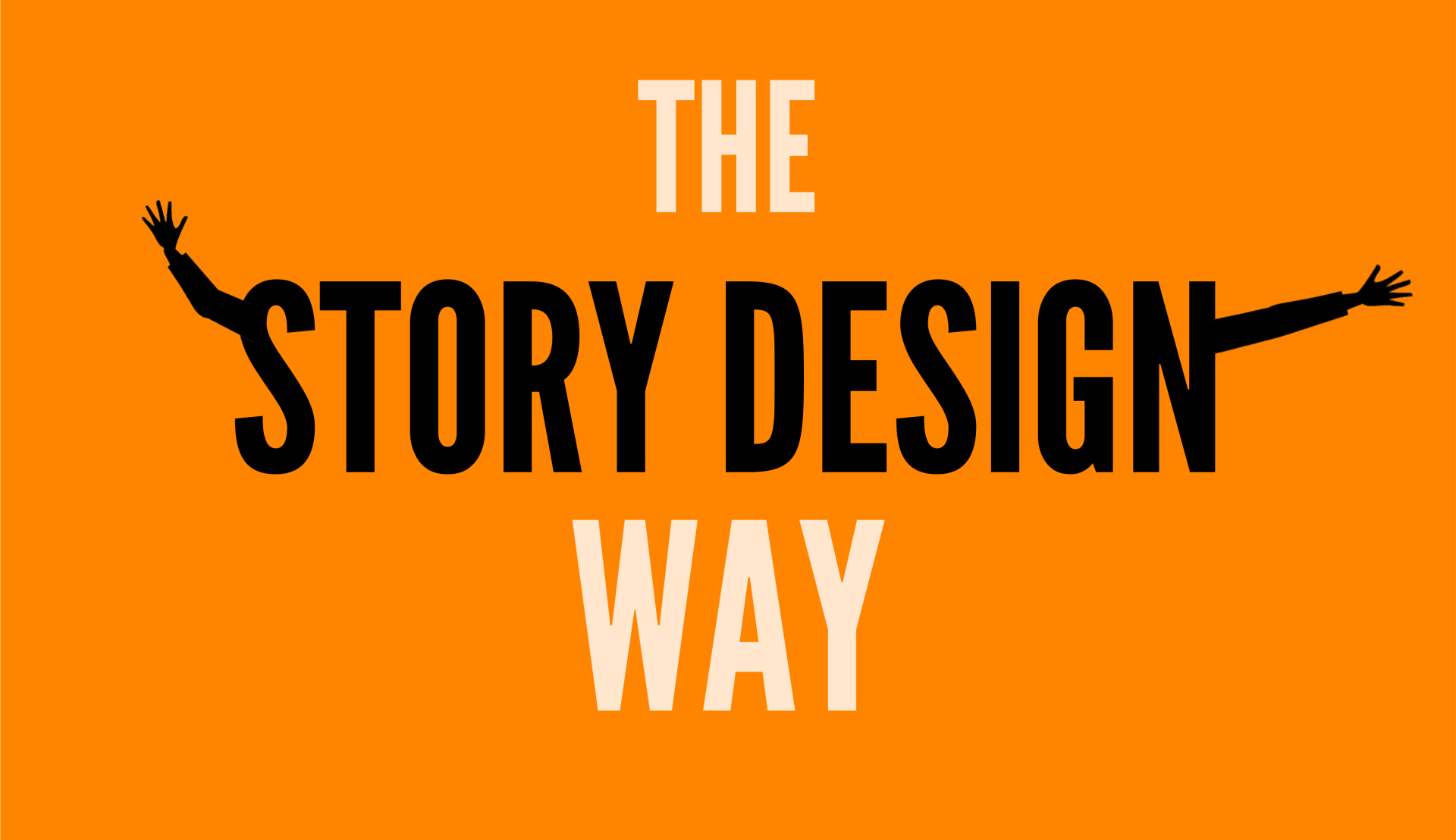
Write your awesome label here.
"We need training...."
From the initial request for training, it's time to start thinking and talking in stories.
Talk with stakeholders in concrete terms. Stories are concrete. Who are the characters? What is the conflict? What is the desired resolution? Involve them in storytelling. After the initial analysis, you. may determine that training is part of the solution.
If so, you're going to need two items before you start designing.
Audience Profile
Find out more than just the demographics of your learning audience, or what they already know about the subject matter. Those things are important, but also find out:
-
Values
-
Current circumstances at work
-
How they are reacting to those circumstance
-
Resistances to training
-
Fears
-
What they do in their spare time
When you get to know your learning audience as more than just an intellect, you're able to design training that speaks to their values, takes into consideration their current circumstances, alleviate resistances and fears and possibly even include some of their spare time activities in the story you write for the training. With this information, you have what you need to address the learner as a whole person, not just a brain. Plus, you have some raw materials to produce one component of a riveting story: relatable characters. We'll come back to that shortly.
The second important item you must have before jumping into design is the...
The second important item you must have before jumping into design is the...
Action List
A list of observable actions learners will perform because of this training. When you ask a subject matter experts, "What should people be able to do as a result of this training?" they will likely say something akin to:
"They just need to be aware of the customer-first policy."
"Be aware of...," "Understand...," "Avoid...." There's something inherently missing in all of these so-called learning objectives. There's no action! Learners can't do any of these things. A good follow-up question to a SME who responds in this way is, "What does someone who is aware of the customer-first policy actually do?" "What could I take a video of them doing?" Better yet, involve the SME in storytelling:
"Who in the company might need to be aware of the customer-first policy?"
"Our retail specialists, stockers, anyone who's on the floor and encounters a customer in our store."
"Let's say there's a stocker, we'll call her Madeline. She's restocking soup cans and she sees a customer walking toward her. What should she do?"
"She should smile at the customer as soon as they catch her eye."
"Okay, what should Madeline do next?"
"Greet her and ask if she can help her find anything. Then she should walk with the customer to the location of the item they are looking for."
"Our retail specialists, stockers, anyone who's on the floor and encounters a customer in our store."
"Let's say there's a stocker, we'll call her Madeline. She's restocking soup cans and she sees a customer walking toward her. What should she do?"
"She should smile at the customer as soon as they catch her eye."
"Okay, what should Madeline do next?"
"Greet her and ask if she can help her find anything. Then she should walk with the customer to the location of the item they are looking for."
And so on. Already, you've gotten past "Be aware..." and nailed down four observable actions:
-
Smile at the customer as soon as they catch your eye
-
Greet the customer
-
Ask if you can help them find anything
-
Walk with the customer to the location of the item they are looking for
Can you observe someone smiling, greeting, asking and walking? Yes! And the story continues until you've unearthed all of the observable actions you need to train employees on.
How does the action list contribute to a story for training? Read on!
Put the story together
With the audience profile and the action list, you have the raw materials for constructing a great learning experience...and a riveting story!
First, the audience profile provides the intel needed to create relatable characters: characters that will make your learning audience will say, "Yeah, I get that person," or "They are like me (or someone I know)." Next, put the relatable character in direct conflict with the actions on the action list, and you have a tailor-made story for your audience.
"Should I resolve the story?"
Nope. Take a look at the Story Design model below. Once the story has produced a desire for resolution, the story has done its work. Leave the story at the height of the conflict. A story crafted in this way will directly connect with the action you are training your learning audience to take.
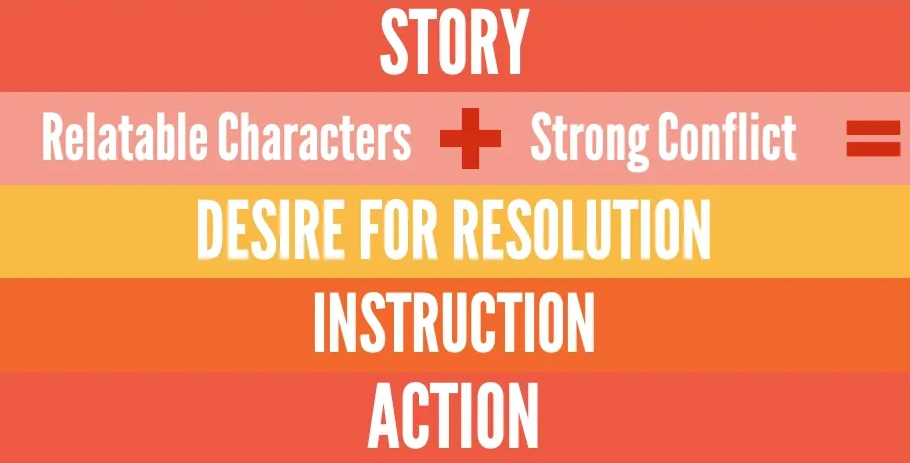
Train with the story
The training picks up at the end of story. Here is a simple way to maximize the power of the story in training:

Story
Tell the story. If you've designed it with relatable characters and strong conflict with the action list, the development of the story will be secondary. Whether it's text on a page, video or a story you simply tell to a live audience, it will have the intended outcome of creating a desire for resolution.
Reflect
Ask a question of your learning audience that gives them the opportunity to reflect on the story, especially the emotional impact of the story: "How do you think the character feels? Why do you think she feels that way?" There's no right or wrong answers in reflect questions, but they are a powerful way to continue the impact of the story and prep learners for the next step.
Solve
Ask them to solve a problem based on the story. Since your relatable character has taken observable actions in direct conflict with the action list, there's a lot of problems to solve! Develop activities that give the learner an opportunity to:
-
Self-discover the action list
-
Practice doing the actions
Self-discovery means that you don't tell them the action list. You ask questions, based on the story that help the learner self-discover them. "Did. you notice anything out of place in this story?" "What advice would you give the character?" "What might they do or say differently to make the customer feel valued?" If you're using a multiple-choice question, make the answers to the questions as real-to-life as possible. Plausible. Start them with the same word or phrase and make them similar lengths.
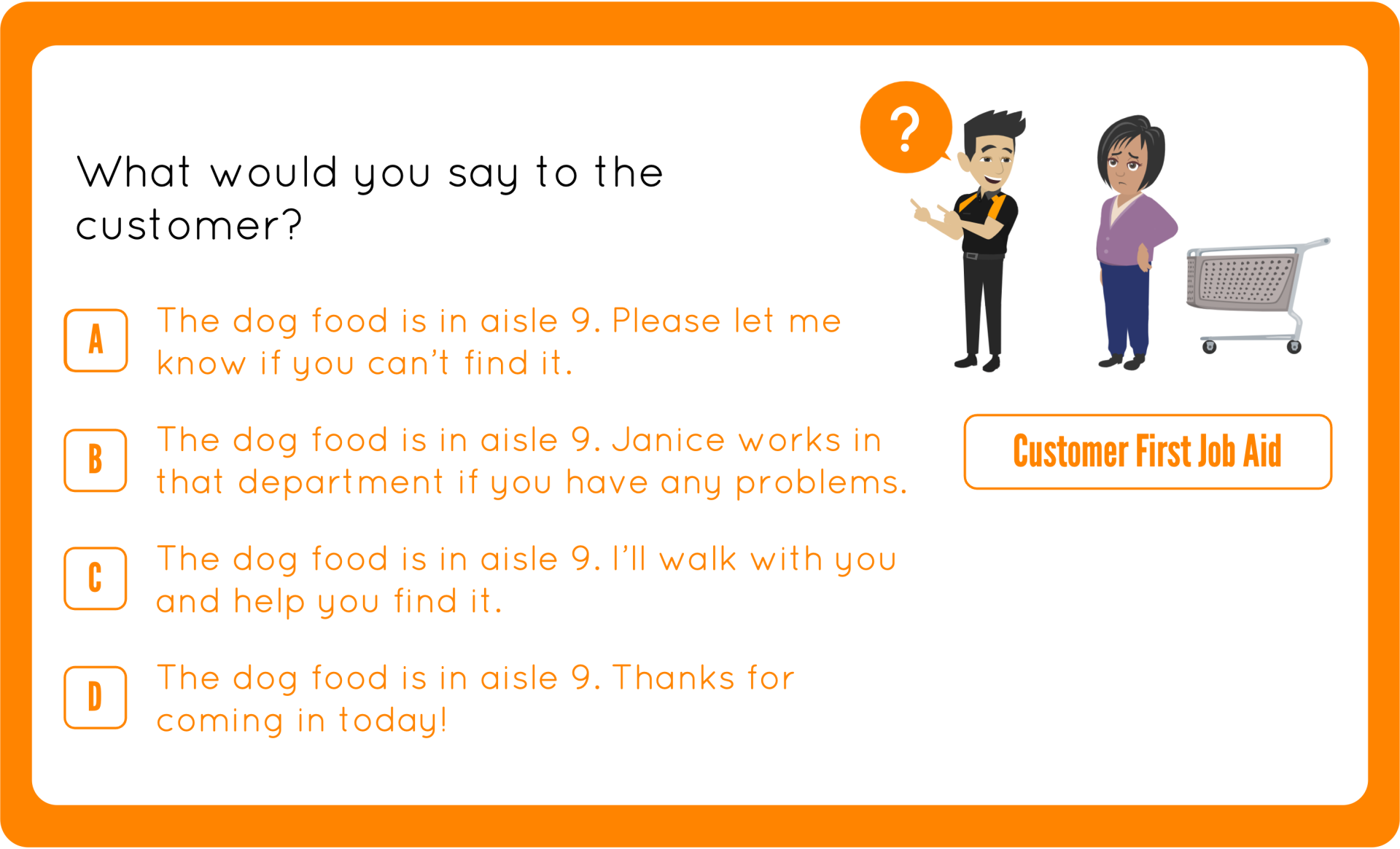
Provide a job aid to answer the question: the same job aid that is available to them in the workplace. The job aid is a pretty version of the action list!

Feedback
Notice that up to this point, you haven't "trained" them to do anything. They've experienced a short story, reflected on it and solved a problem based on the story. Feedback is where you do some "telling"...kind of. Often the best kind of feedback is another question that takes them further into self-discovery of what they should be doing. Below are two examples of feedback, negative and positive.
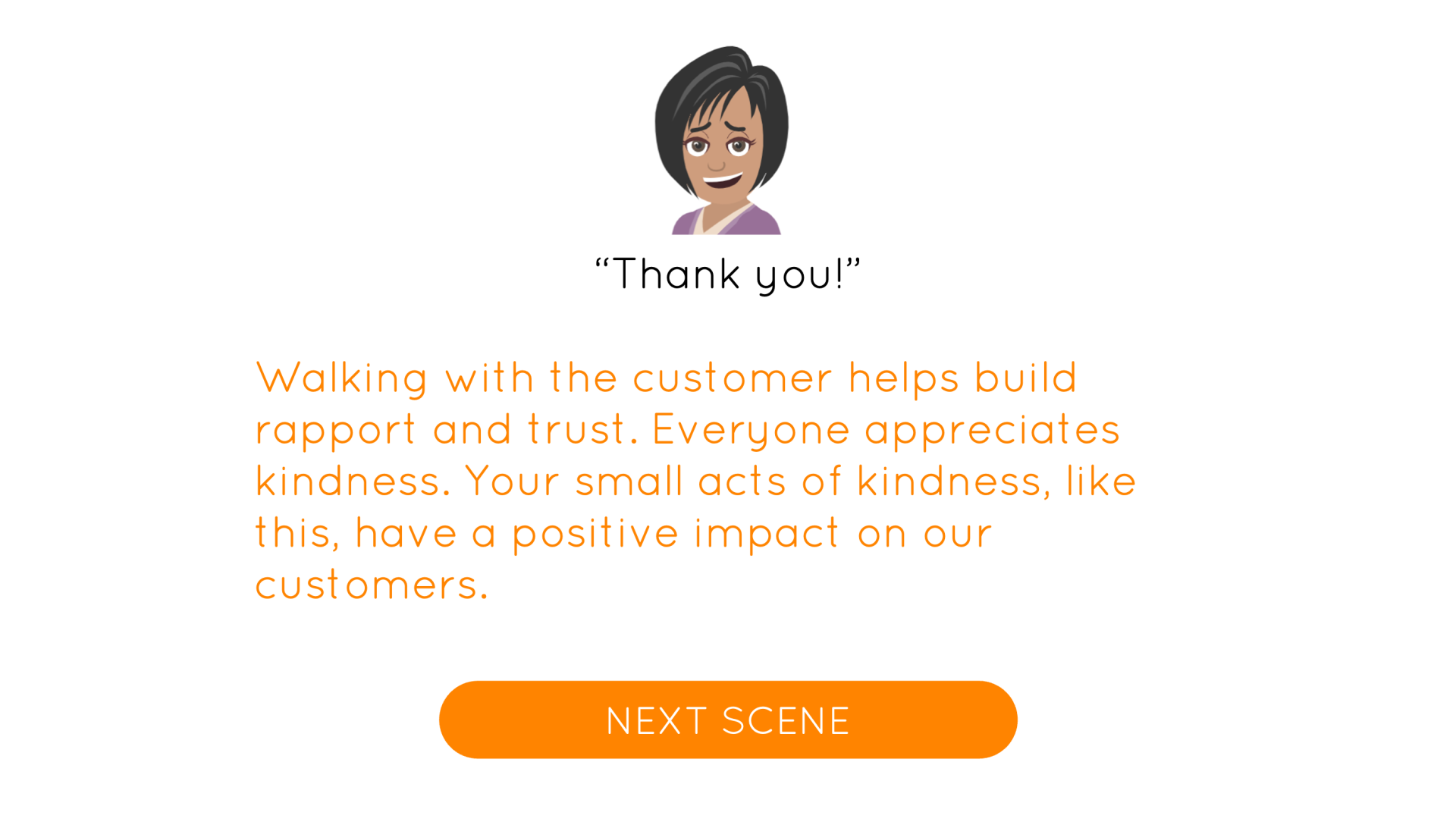
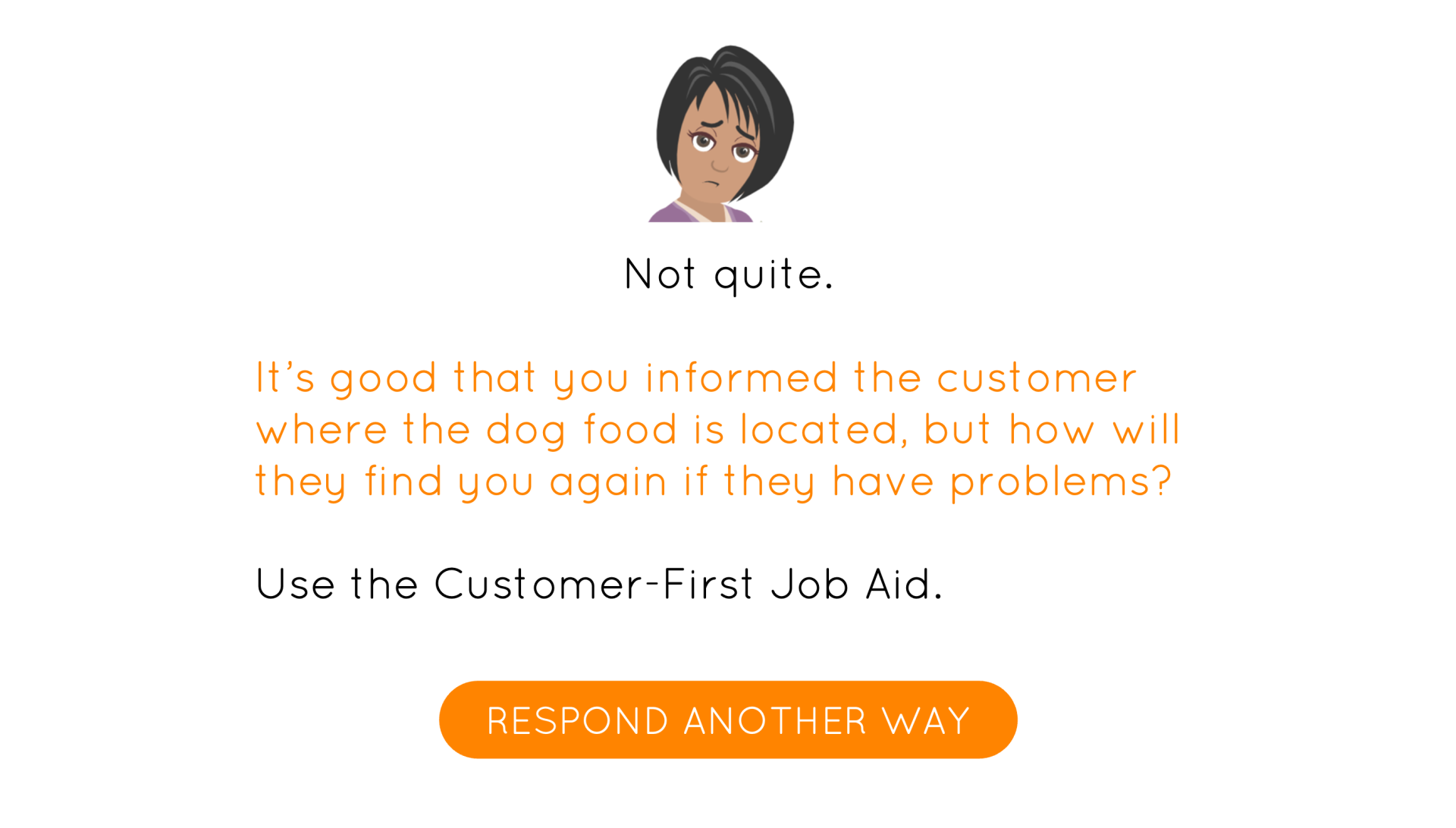
In both, the story continues. We see the character's reaction and we receive a reason why the answer is correct or incorrect. For the incorrect feedback, we are encouraged to use the Customer-First job aid to reinforce its use at work.
The humanizing impact of Instructional Story Design
Training in this way is exciting! For you, the designer, and for the learner. It respects people's abilities to observe, critically think and solve problems based on the story. It's skills-based. It acknowledges the fact that learners are humans and keeps the focus on discovery and practice. It's exactly what your learning audience is craving.
Humanize your learning experiences
If you are struggling to connect with learners and you just need some guidance to get started, join us for the next cohort of The Instructional Story Design Experience. You'll get practice with every step of the process--from interviewing stakeholders to developing a story-based course, using a case study.
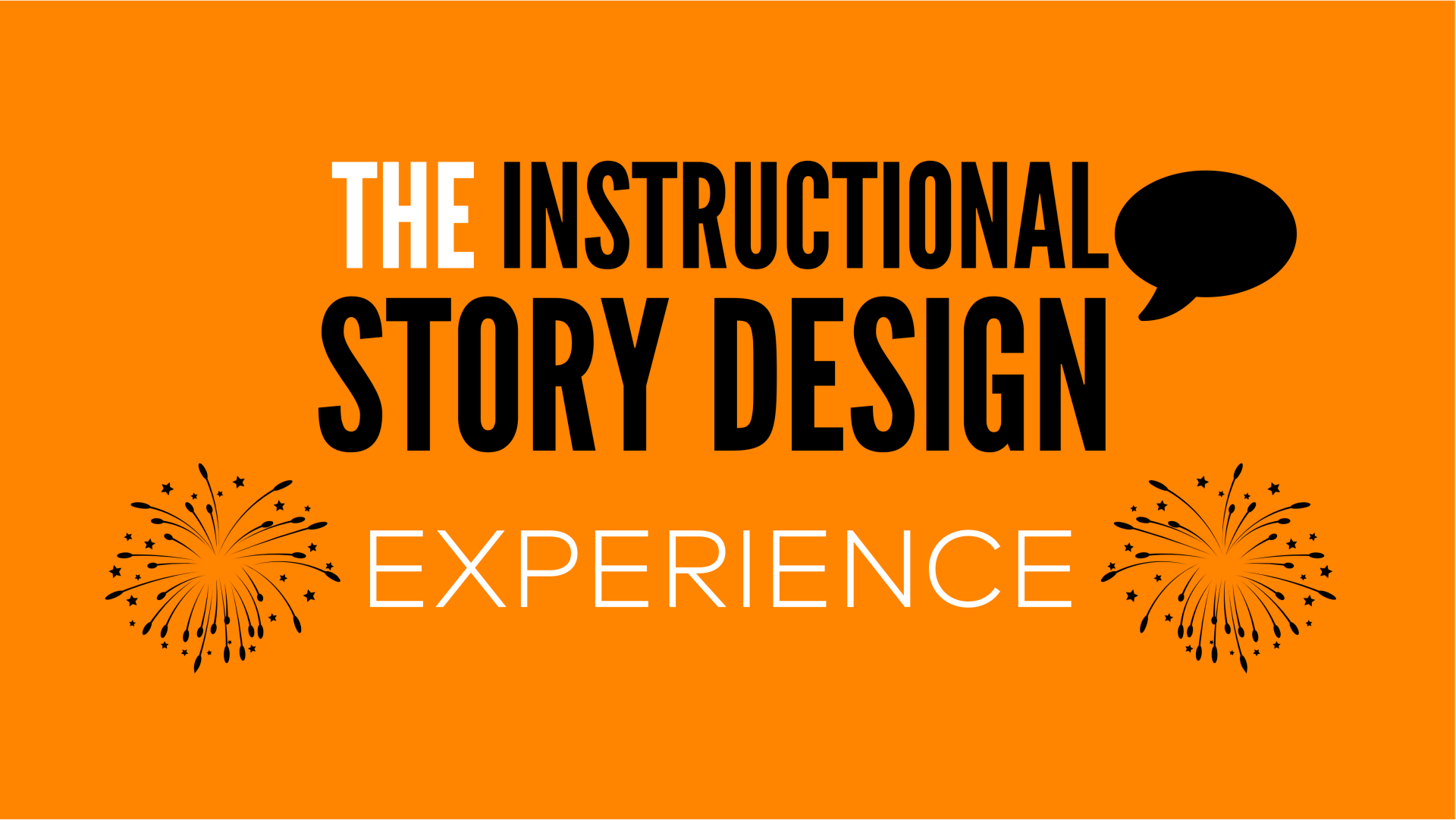
Take a sneak peek inside Rance's book, Instructional Story Design, an ATD Press best-seller. Join thousands of other IDs who are taking their training to the story level!
L&D Teams, bring Instructional Story Design to you!
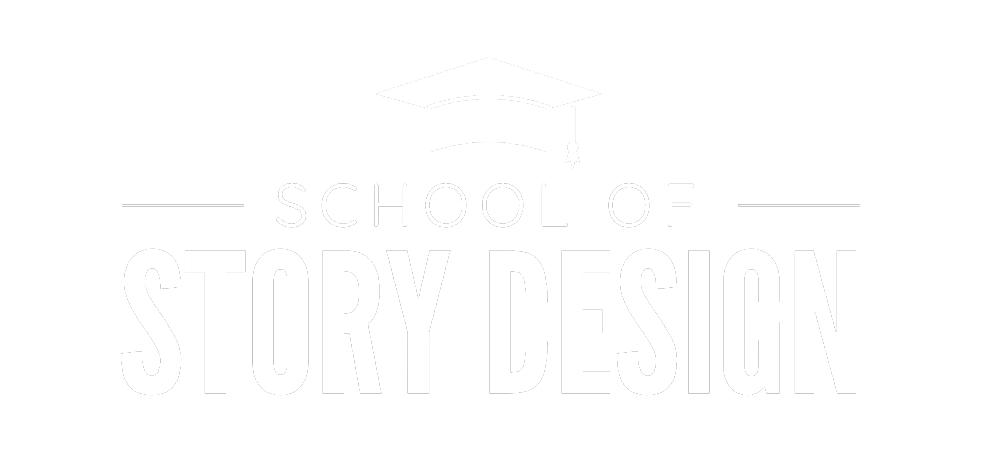
Training comes to life at the School of Story Design. Instructional designers learn how to write, produce and train with stories for meaningful learning experiences.
Copyright © 2025
